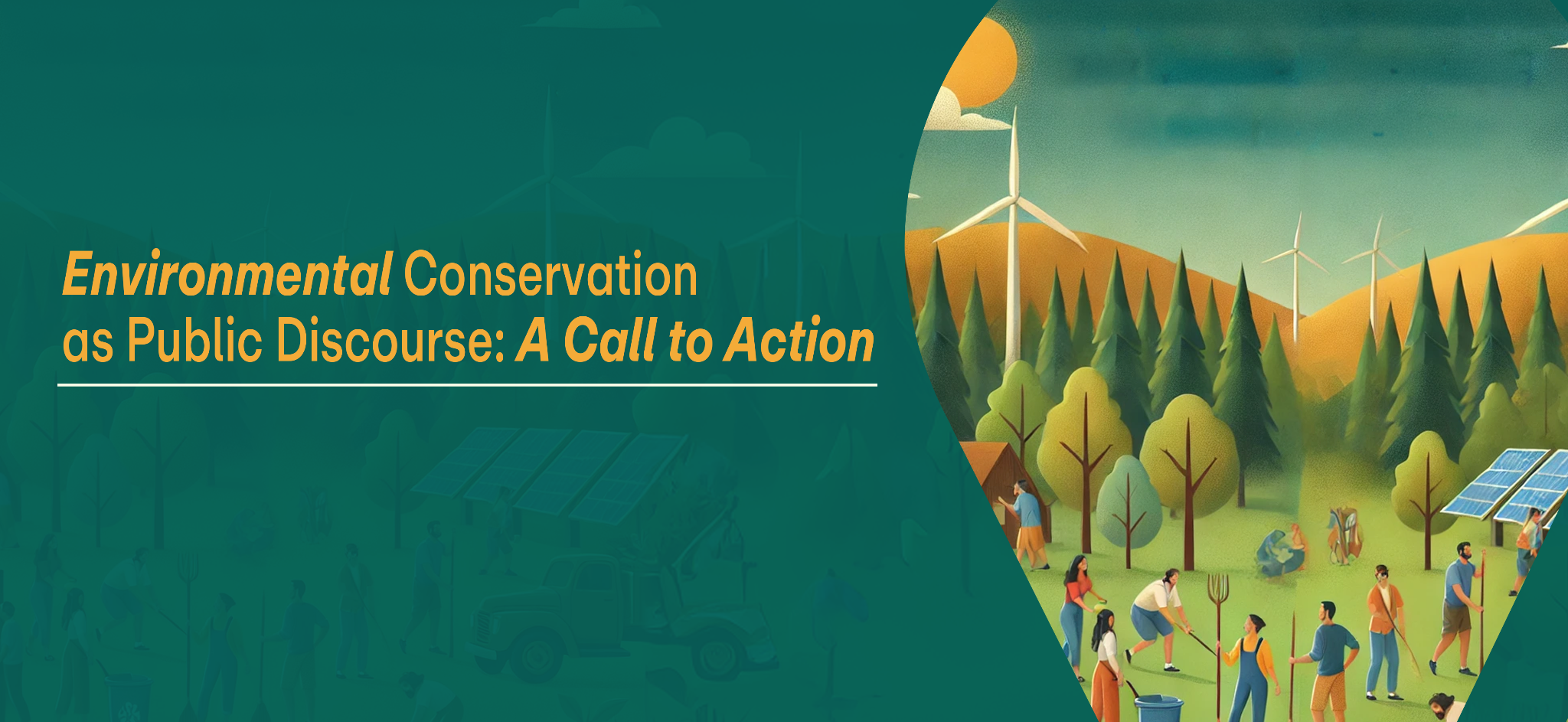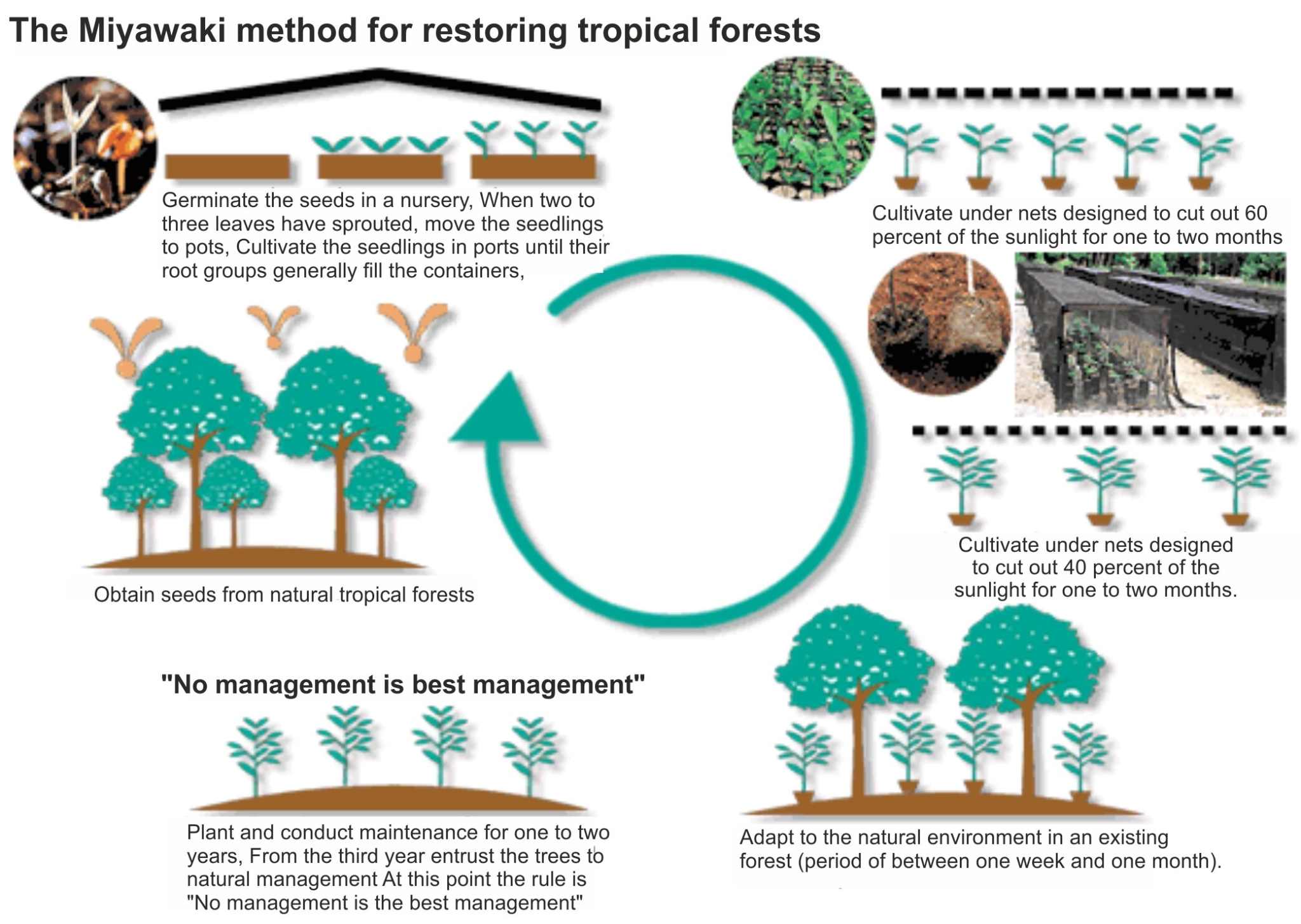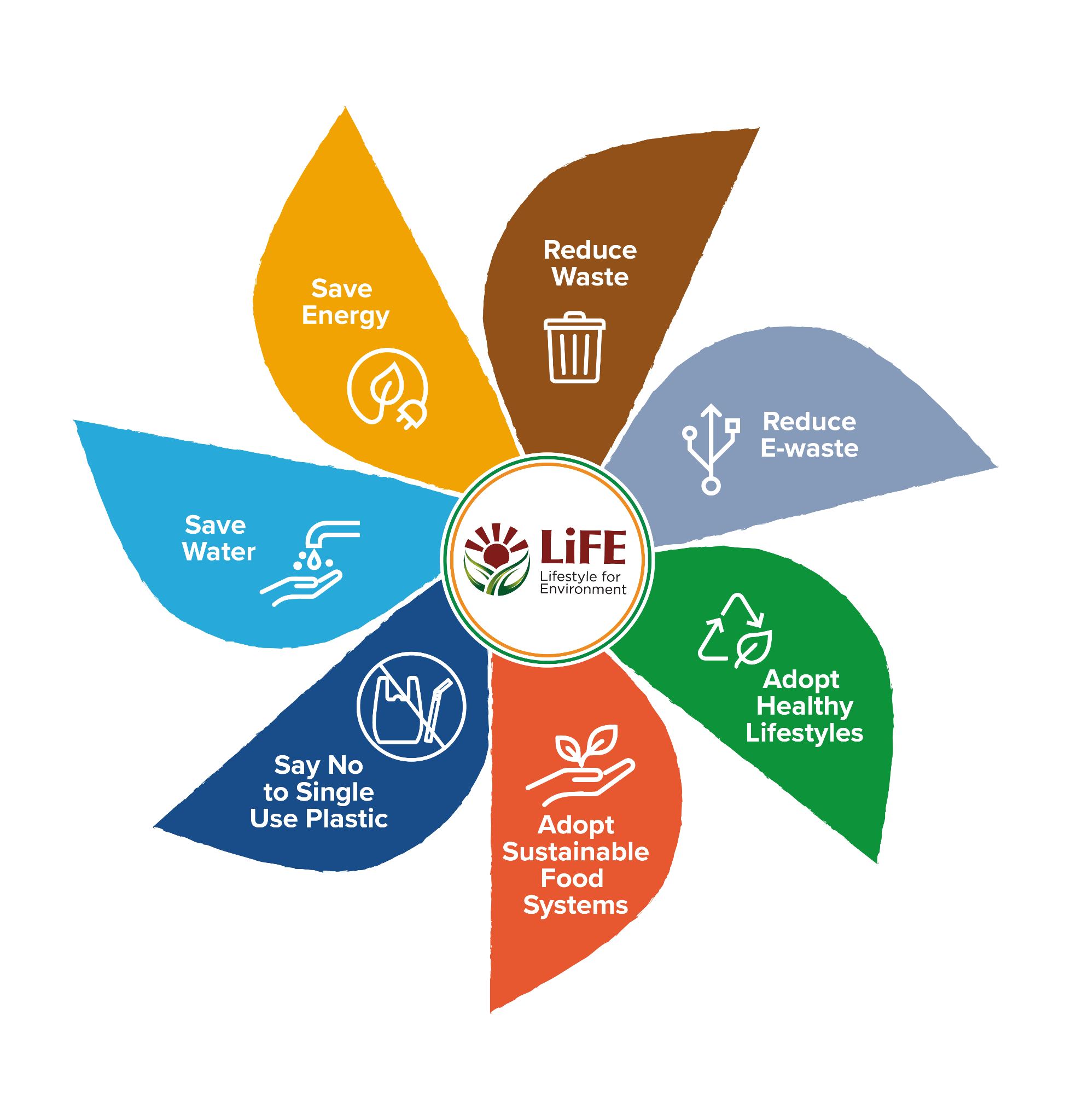Environmental Conservation as Public Discourse: A Call to Action
Blogs Home
- 11 Nov 2024

In 2018, Guntur grappled with a severe water crisis precipitated by relentless drought conditions, leaving countless residents in desperate need of clean water. In response, the Indian government orchestrated a “water train” to ferry vital supplies from a nearby river to the parched region. However, if you believe this is merely a localized issue, consider the following: in March 2024, Bengaluru faced a staggering daily water deficit of 500 million liters, nearly 20% of its total demand, while Delhi endured an unprecedented heatwave with soaring summer temperatures. Also, according to a 2022 study, the Iberian Peninsula was driest in 1,200 years.
Further compounding these challenges, ISRO’s extensive research, utilizing satellite data from 1984 to 2023, uncovered that of the 2,431 glacial lakes larger than 10 hectares identified in 2016-17, a significant 676 have markedly increased in size (due to melting) since 1984. Yet, if you think these are isolated problems, read on. In recent decades, average forest fire sizes in Canada, the USA, and Australia have alarmingly doubled or even tripled, with mean and extreme fire sizes escalating by 65-450% over the past 40 to 60 years.
These disturbing trends are echoed by the stark shift in Global Earth Overshoot Day, which alarmingly moved from 25th December in 1971 to 1st August in 2024. This dramatic change underscores the urgent need for collective action to reverse this trend. Earth Overshoot Day serves as a sobering indicator of our unsustainable consumption patterns, marking the moment when humanity’s demand for ecological resources surpasses the planet’s capacity for regeneration.
The essential resources that sustain life on Earth: forests, water bodies, soil, biodiversity, minerals, air, and wildlife are what make our planet habitable. As expressed in the Sanskrit verse, प्राणानां दाता: पृथिव्याः। पृथिव्याः परितोऽस्मिन् कृते प्राणं च गच्छतु।। which means "Earth is the giver of life; let life thrive upon her." As integral members of this ecosystem, it is our duty to preserve the Earth and its invaluable resources. The harmony among various stakeholders is crucial for the sustainable use of natural resources, and the responsibility to protect our environment from degradation rests upon all of us. Unfortunately, environmental conservation often remains a peripheral topic in public discourse, confined largely to classrooms, textbooks, and legislative frameworks.
The Need for Environmental Conservation
- The imperative to conserve our natural resources encompass a multitude of environmental challenges that threaten the world's ecological balance and, by extension, its socio-economic fabric. The tapestry of environmental issues facing the nation is both complex and interconnected, demanding immediate attention and concerted action.
Climate Change: An Overarching Threat
Climate change looms as an overarching threat, manifesting in erratic rainfall patterns, intensifying heatwaves, and more frequent extreme weather events. 2023 was the warmest year in the 174 year observational record and the year 2022 saw India grappling with its hottest March in 122 years, while the subsequent monsoon brought floods that affected over millions of people across India. The Intergovernmental Panel on Climate Change (IPCC) warns that such climatic volatility will only intensify without drastic mitigation measures.
The Himalayan Challenge
The Himalayan region, often referred to as the "Third Pole," faces unique challenges. Glacial Lake Outburst Floods (GLOFs) pose an increasing threat as global temperatures rise. In October 2023, a glacial lake outburst flood in Sikkim and the 2021 Chamoli disaster in Uttarakhand, serves as a stark reminder of the vulnerability of mountain ecosystems and communities to climate-induced calamities. In the words of John Muir, “The mountains are calling, and I must go.” Let us heed that call-not only to appreciate nature but to actively protect and conserve it for generations to come.
The Economic Imperative
The conservation of our natural resources is not merely an environmental obligation but a socio-economic imperative. The World Bank estimates that environmental degradation costs India approximately 5.7% of India’s GDP annually. This staggering figure underscores the inextricable link between ecological health and economic prosperity.
The Plastic Predicament
Recently, India has secured the top spot as the biggest plastic polluter in the world, releasing 9.3 million tonnes (Mt) annually, according to a new study. This amounts to roughly one-fifth of global plastic emissions. The country's official waste generation rate, approximately 0.12 kilogrammes per capita per day, is likely underestimated, as the official statistics do not include rural areas, the open burning of uncollected waste, or waste recycled by the informal sector.
Global Environmental Crises
The environmental crisis extends beyond India's borders. A series of record-breaking wildfires are currently burning in several regions in Brazil, threatening residents and some of the most important ecological systems in the world. More than 50,000 wildfires are currently (as of September 2024) active throughout Brazil.
Furthermore, a UN report in February 2024 found that the extinction risk for migratory species is growing globally, with 44% of CMS-listed species showing population declines. The two biggest threats to migratory species are habitat loss and overexploitation, but climate change, pollution, and invasive species also have a significant impact.
Air Pollution: A Pernicious Threat
Air pollution has reached alarming levels in many Indian cities. The 6th Annual World Air Quality Report finds New Delhi to be the most polluted capital city in the world, while India ranks as the third most polluted country. This atmospheric degradation not only jeopardizes human health but also exacerbates climate change, forming a vicious cycle of environmental deterioration.
Water Crisis: Beyond Scarcity
Paralleling the air crisis, water pollution has reached critical levels. The Central Pollution Control Board reports that 311 river stretches across India are polluted, with the sacred Ganges bearing the brunt of industrial effluents and urban waste. This contamination not only decimates aquatic ecosystems but also imperils the health of millions who depend on these water bodies for their livelihoods and sustenance.
Deforestation and Habitat Loss
Deforestation continues to be a pressing concern, despite modest gains in forest cover. While India's forest area increased to 713,789 sq km in 2021, the quality of these forests remains a contentious issue. The fragmentation of habitats has led to an uptick in human-animal conflicts, with over 500 elephant deaths reported between 2014-2019 due to human-related causes. As the naturalist John Muir poignantly observed, "The clearest way into the Universe is through a forest wilderness." Yet, this gateway to ecological harmony is rapidly shrinking.
Anthropocentric activities have encroached on wildlife habitats, increasing man-animal conflicts, particularly with elephants, tigers, and wolves. India is home to about 30,000 wild Asian elephants, leading to over 500 human deaths and more than 100 elephant fatalities annually from poaching and accidents. With over 75% of the world's tigers, human-tiger conflicts also arise. Efforts like community warning systems and beehive fencing aim to mitigate these issues, but ongoing human encroachment demands sustained commitment for coexistence.
In the face of these multifaceted challenges, the words of environmental scientist David Suzuki resonate deeply: "We're in a giant car heading towards a brick wall and everyone's arguing over where they're going to sit." It's high time we collectively steer this metaphorical vehicle away from impending disaster.
As we stand at this critical juncture, the need for a paradigm shift in our approach to resource management has never been more apparent. Embracing circular economy principles, investing in green technologies, and fostering a culture of environmental stewardship are no longer optional but essential for our survival and thriving. The journey towards sustainability may be challenging, but as anthropologist Margaret Mead wisely noted, "Never doubt that a small group of thoughtful, committed citizens can change the world; indeed, it's the only thing that ever has."
Fostering Public Discourse on Environmental Conservation
The pressing need for public discourse on environmental conservation has never been more urgent, as evidenced by the stark realities of our changing climate and its profound impact on future generations. The normalization of extreme weather events and environmental degradation, particularly among the current generation, underscores the critical importance of fostering open, informed, and action-oriented conversations about our planet's future.
Public discourse serves as a catalyst for collective awareness and action. By bringing environmental issues to the forefront of societal dialogue, we can challenge the "Shifting Baseline Syndrome" that threatens to accept deteriorating conditions as the new normal. This dialogue must extend beyond mere acknowledgment of problems; it should encompass discussions on innovative solutions, policy changes, and individual responsibilities.
By cultivating a robust public discourse on environmental conservation, we can:
- Elevate environmental literacy across all segments of society.
- Bridge the gap between scientific knowledge and public understanding.
- Inspire grassroots movements and community-led initiatives.
- Hold policymakers and corporations accountable for sustainable practices.
- Foster innovation in green technologies and sustainable solutions.
In essence, public discourse is not just about talking; it's about transforming collective concern into concrete action. As we confront the realities of a climate-altered world, engaging in meaningful, widespread conversations about environmental conservation is not just beneficial- it's imperative for the survival and thriving of our planet and future generations.
The Power of Individual Action
As we navigate the complexities of environmental conservation, it is essential to remember that each action counts. From reducing plastic use to conserving water and supporting sustainable practices, our individual efforts can collectively make a significant impact. The Sanskrit phrase from Atharvaveda "माता भूमि: पुत्रो अहं पृथिव्या" (Earth is my mother, and I am her child) eloquently encapsulates our duty to nurture the environment.
Education: The Foundation for Change
Education plays a foundational role in fostering environmental consciousness. Integrating environmental studies into curricula nurtures eco-consciousness from an early age (bringing resource utilization and environment conservation into daily habits). Daily classroom discussions from primary level would help in inculcating eco-friendly activities and make citizens eco-sensitive, while promoting green skills in higher education equips future leaders for sustainable innovation.
Political Engagement and Policy Making
Political engagement is crucial for systemic change. Elevating environmental issues in election debates and party manifestos ensures conservation remains a governance priority. This political will can translate into effective policies and regulations that support sustainable practices.
Recently, the Prime Minister launched the ‘Jal Sanchay Jan Bhagidari’ initiative for rainwater harvesting structures and improved water sustainability. He emphasized the urgent need for water conservation amid recent monsoon impacts and India's limited freshwater resources. This call is the need of the hour, considering the ongoing resource depletion and environmental degradation.
Community Engagement and Jan Bhagidari
Community engagement and social awareness campaigns foster Jan Bhagidari (public participation), transforming abstract environmental concerns into tangible, local initiatives. This grassroots approach cultivates a sense of ownership and responsibility towards nature.
From Indore's transformation into India's cleanest city to Modhera's achievement as India's first 24x7 solar-powered village, these success stories demonstrate the power of community-driven efforts and innovative solutions.
The Paani Foundation's work in Maharashtra, Hiware Bazar's water conservation model, Sikkim's transition to a fully organic state, and Pune's participatory budgeting process all illustrate how localized efforts, supported by strong leadership and community participation, can yield significant environmental benefits.
The Role of NGOs and Environmental Leaders
Non-governmental Organisations (NGOs) and Padma awardee environmentalists like Tulsi Gowda, Chami Murmu, and Dukhu Majhi serve as vital catalysts, leveraging their grassroots efforts and expertise to amplify conservation messages. Their stories inspire action, bridging local concerns with national priorities.
Harnessing Social Media
Social media offers unparalleled opportunities to engage diverse audiences, democratizing environmental discourse through viral challenges and live-streamed events. From viral challenges promoting eco-friendly practices to live-streamed conservation events, these platforms can rapidly disseminate information and engage diverse audiences.
Innovative Approaches to Conservation
To further bolster environmental conservation efforts, we must embrace cutting-edge technologies and novel approaches:
- Blockchain-based systems can revolutionize transparency in supply chains, allowing consumers to trace the environmental impact of products.
- Artificial intelligence and machine learning algorithms can optimize resource allocation in agriculture, reducing waste and maximizing yields sustainably.
- Virtual and augmented reality experiences can transport people to endangered habitats, fostering empathy and understanding.
- Biomimicry in urban planning and architecture can create cities that function like forests, cleaning air and water while providing habitats for urban wildlife.
These innovations, combined with traditional wisdom and community action, can propel us towards a more harmonious relationship with our planet.
Balancing Development and Environmental Conservation
The challenge of our time lies in striking a delicate balance between development and environmental conservation. The concept of sustainable development, which meets the needs of the present without compromising the ability of future generations to meet their own needs, offers a path forward.
- This balance requires innovative approaches:
- Green infrastructure and eco-friendly urban planning
- Circular economy principles to minimise waste and maximise resource efficiency
- Renewable energy transition to reduce dependence on fossil fuels
- Sustainable agriculture practices that preserve soil health and biodiversity
- Conservation-based tourism that supports local economies while protecting natural habitats.
By embracing these principles, we can pursue economic growth and societal progress without sacrificing our environmental heritage. It's not a choice between development and conservation, but rather a commitment to responsible, sustainable development that honors our ecological responsibilities.
Conclusion: A Call to Action
As we confront the realities of a climate-altered world, engaging in meaningful, widespread conversations about environmental conservation is not just beneficial, it's imperative for the survival and thriving of our planet and future generations. The journey towards environmental conservation offers an opportunity to reconnect with life's essence and redefine our relationship with the natural world.
As we move forward, let us remember that the responsibility to protect our environment from degradation rests upon all of us. By embracing our role as Earth's stewards, we ensure a flourishing planet for future generations. The time to act is now let us rise to this challenge and create a world where nature and humanity thrive in harmony.
References:
- https://pib.gov.in/PressReleasePage.aspx?PRID=2052494#:~:text=%E2%80%9CWater%20will%20be%20the%20first,resolutions%20towards%20a%20sustainable%20future.
- https://www.nationalgeographic.org/encyclopedia/preservation/https://overshoot.footprintnetwork.org/newsroom/past-earth-overshoot-days/
- https://www.nature.com/articles/s41586-024-07918-8
- https://www.thehindu.com/news/cities/chennai/simple-changes-in-habits-can-make-a-difference-in-environmental-conservation-health-minister/article68701353.ece
- https://frontline.thehindu.com/the-nation/how-does-indore-do-it-india-cleanest-city-7-years-in-a-row-strategy/article67737621.ece
- https://www.weforum.org/agenda/2022/10/india-first-solar-powered-village-pays-residents-electric-bills/
- https://m.economictimes.com/news/india/tribal-environmentalist-among-34-not-so-well-known-people-awarded-padma-shri/articleshow/107154909.cms






